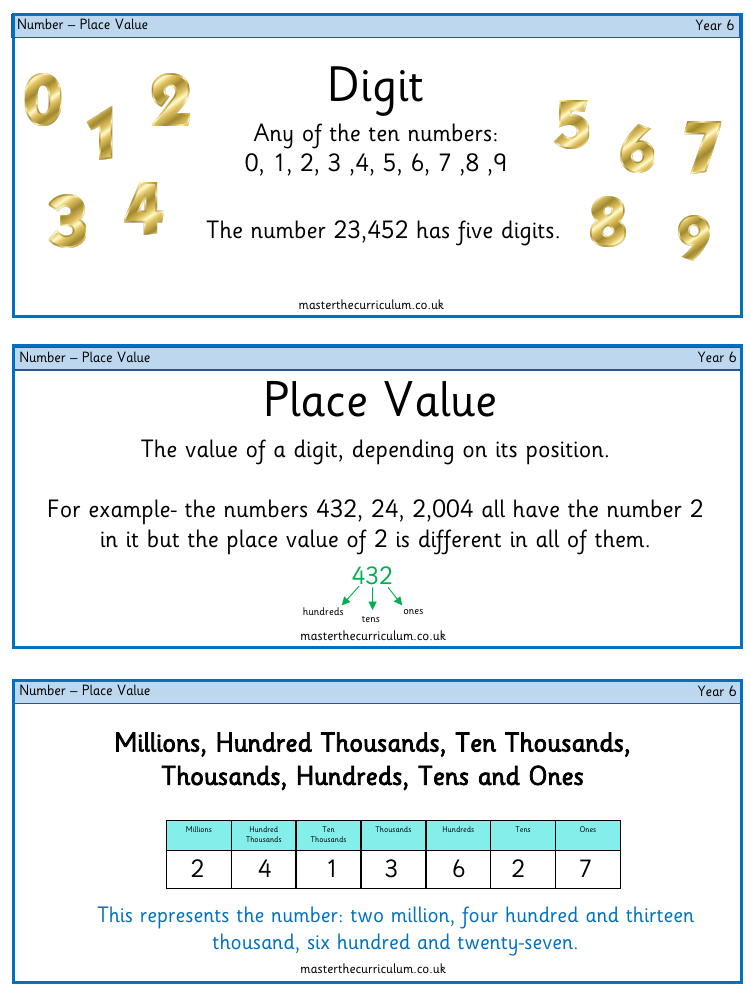Place Value - Vocabulary

Maths Resource Description
The concept of place value is an essential part of the mathematics curriculum for Year 6 students. It refers to the value a digit holds based on its position within a number. For instance, in numbers like 432, 24, and 2,004, the digit '2' has different place values due to its varying positions. A digit can be any of the ten numbers from 0 to 9, and when combined, these digits form larger numbers. For example, the number 23,452 has five digits, with each digit occupying a specific place, such as hundreds, tens, or ones. The place value system extends to larger numbers as well, including millions, hundred thousands, and ten thousands, as seen in the number 2,413,627, which represents two million, four hundred and thirteen thousand, six hundred and twenty-seven.
Additional key terms related to place value include numerals, which are symbols or names that stand for numbers, such as '7' or 'eleven'. Integers are whole numbers, including both positive and negative numbers. Students also learn about sequences, which are lists of numbers following a specific pattern, and the act of comparing numbers to determine if one is greater than, less than, or equal to another. Visual aids, such as place value charts and counters, are used to help students understand and find the place value of each digit within a number. The curriculum also introduces concepts like partitioning, which involves dividing numbers into smaller parts, and rounding numbers to the nearest 10, 100, 1,000, or 100,000. Students are taught various strategies for calculations, the concept of powers of 10, and the use of Roman numerals, with the goal of mastering place value understanding.

